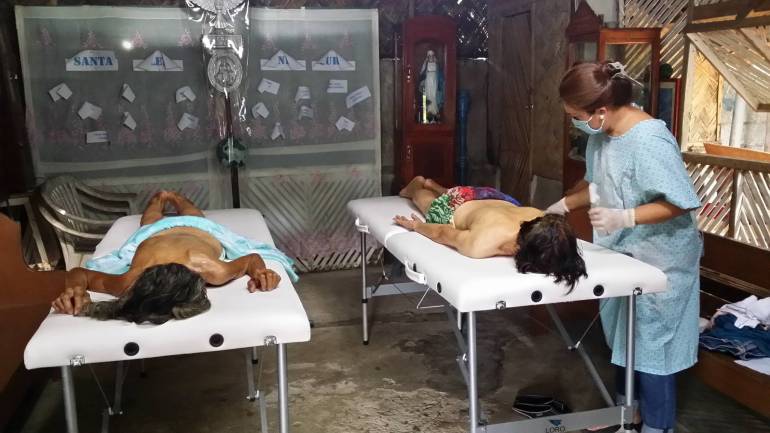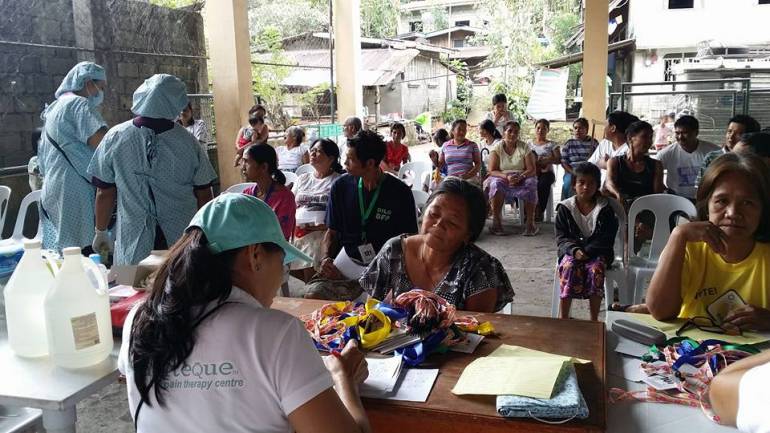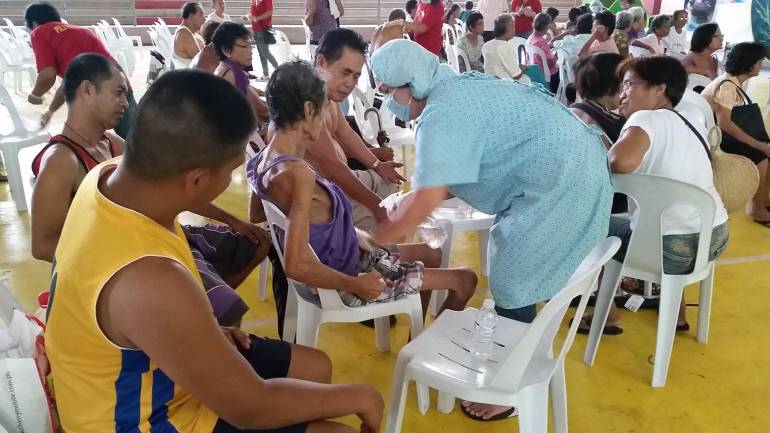Filipino volunteer group marks 10th year of pain-healing mission

Dr. Mary Jean Netario Cruz promotes transdermal magnesium therapy, a safe method that does not require oral intake of the mineral.
A team of magnesium therapy advocates led by naturopathic Dr. Mary Jean Netario Cruz observes this month their 10th year with a plan for more missions ahead.
Over the past decade, the group has conducted pain-healing outreach in different parts of the Philippines, offering free therapy to people who complained of back pain, charley horses, headaches, insomnia, arthritis, and other conditions.
Most of the seniors who received therapy were economically disadvantaged.
The idea to do the pain-healing mission got inspiration when Cruz, on her birthday, dropped by Kanlungan ni Maria—Home for the Aged—in Antipolo, a city about 50 kilometers southeast of Manila. There, she met Fr. Dari Dioquino, who was then in charge of the residence.
Cruz introduced herself as a magnesium therapy advocate to Dioquino and shared with him its ability to relieve and heal body pains, which were common among his residents.
Enlightened about the healing power of the mineral, the hospitable priest asked his residents, who were experiencing body pains, if they were willing to try the therapy. The residents welcomed Cruz and allowed her to apply magnesium oil to the painful parts of the body.
Cruz promotes transdermal magnesium therapy, a safe method that does not require oral intake of the mineral.
The residents, who complained of pain in their backs, legs, hands, and joints, reported relief hours after the application of the oil.
Dioquino himself was surprised when his knee joints improved.
The priest became interested in magnesium therapy and made further studies on it with the help of Cruz.
In December 2014, Dioquino, who became a magnesium therapy advocate himself over the months, joined Cruz's team in a pain-healing outreach in Bohol, an island province about 1, 200 kilometers south of Manila by air. It's the team's first mission, although Cruz has been singlehandedly offering therapy to people in the past years.
Cruz helped destress rescue operation volunteers and survivors of Typhoon Yolanda in 2013.
Cruz herself, Dioquino, professionals, entrepreneurs, a lawyer, and students—all advocating magnesium therapy—composed the Bohol mission.
"A diet low in magnesium, accompanied by a lifestyle that drains the person's magnesium, can be responsible for his body pains," Dr. Mary Jean Netario Cruz.
The late Fr. Fernando Po, a wheelchair-bound priest and native of Bohol, collaborated with the team on that mission.
This author covered that event. The team provided free therapy and bottles of magnesium oil to about a hundred people, mostly seniors.
"A diet low in magnesium, accompanied by a lifestyle that drains the person's magnesium, can be responsible for his body pains," Cruz said.
In April 2015, the team also traveled to Sagada, a municipality in the mountainous Cordellira, for the same mission. Sagada, known for its rice terraces and Sumaguing Caves, is a tourist destination in the northern Philippines.
The team also traversed a mountain trail in Tanay, a town more than 30 kilometers south of Manila, to visit the Dumagats in January 2015.
Aside from the free therapy, they also brought eight sacks of rice and planting materials, said Victoria Baterina-Solis, a member of the team. The Dumagats are an indigenous people; their staples are sweet potatoes and corn.
The Dumagats' main sources of livelihood are making sawali (woven bamboo splits), raising livestock, and processing tree branches into coal.
The team had also conducted therapy in Rizal, Laguna, Sorsogon, Marawi, Cagayan de Oro, Mount Pulag, and other parts of the country.
"Magnesium has no direct analgesic effect," explained Cruz. "But it prevents calcium ions from getting into the cells by stopping the NMDA receptors."
She also mentioned that a lack of magnesium in the body can trigger certain body pains.
Alcohol, excessive sweating, and some medicines, like antibiotics and proton pump inhibitors, deplete one's store of magnesium.
Dioquino joined a number of the team's missions. He is the first active magnesium advocate priest in the Philippines.
In an e-mail to this author on March 12, 2015, Dr. Carolyn Dean, a Canadian medical and naturopathic doctor based in the US, also confirmed that Dioquino is the first ever priest in the world to openly advocate magnesium therapy.
Dean also cited Cruz as the world's first magnesium therapy practitioner to do treatment in a clinical setting. Cruz opened a clinic in Antipolo in 2014 known as the Magiteque Pain Therapy Centre.
Cruz and her team are grateful to individuals and groups for their support of the mission. She is eyeing conducting a pain-healing outreach on Talim Island, a lake island in Laguna de Bay.











